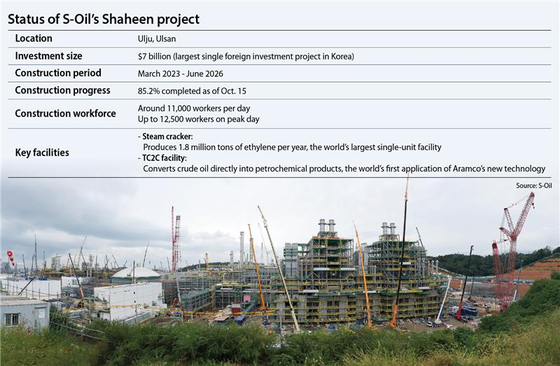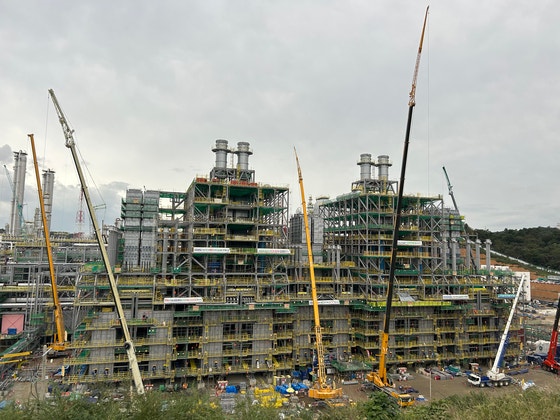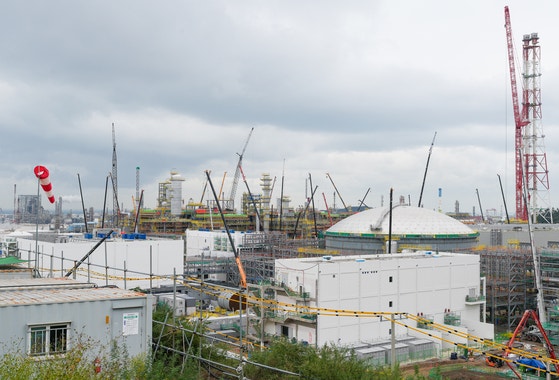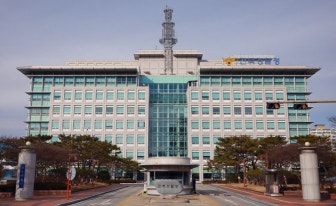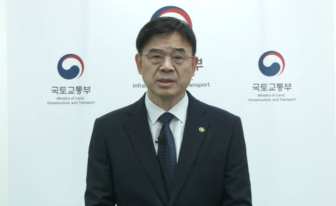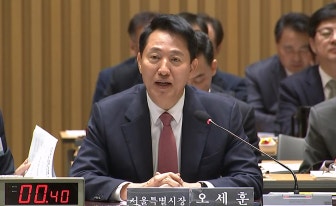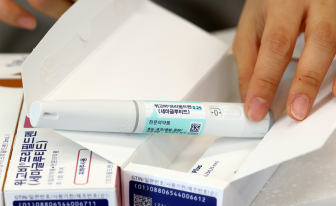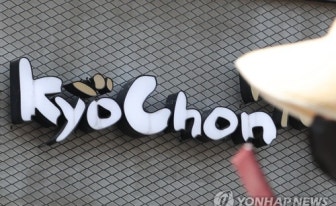ULSAN — Aramco-backed S-Oil’s Shaheen project in Ulsan is roaring ahead, with some 11,000 workers swarming the vast site Tuesday morning — a rare scene of momentum and purpose in a petrochemical landscape otherwise marked by stillness and doubt.
Four towering vertical structures, each standing 68 meters tall — roughly the height of a 25-story apartment building — rise in pairs. This is the world’s largest steam cracker by ethylene output, a petrochemical giant designed to produce 1.8 million tons of ethylene per year.
“The construction is already 85 percent complete, and by June next year, this Shaheen factory will be capable of producing 3.2 million tons of petrochemicals,” said Lee Hyun-young, project director from Hyundai Engineering and Construction, the main contractor of the Shaheen Project, during a press tour on Tuesday. “Over 11,000 workers work at this mega factory daily — a number that swells to 12,500 at peak times.”
Launched in March 2023, the Shaheen project marks the largest petrochemical investment in Korean history with $7 billion investment by Aramco, S-Oil’s biggest stakeholder. The massive complex spanning 860,000 square meters — roughly the size of 120 football fields — also marks the single largest investment ever made in Korea by a foreign company to date.
Once completed, the facility is expected to produce 770,000 tons of propylene, 200,000 tons of butadiene and 280,000 tons of benzene, along with 1.8 million tons of ethylene every year.
With the adoption of TC2C technology, the conversion rate of crude oil to petrochemicals, once limited to just 10 to 20 percent per barrel, can rise as high as 70 percent, while processing costs are expected to drop by up to 40 percent.
“Traditionally, up to 80 percent of crude was refined into gasoline, but in the era of EVs, Shaheen factory is designed to channel nearly 80 percent of its output into petrochemicals like naphtha to meet shifting global demand,” Lee said.
For oil refiners, dependence on gasoline can no longer be viable as the global push for decarbonization threatens to erode demand for traditional fuels. Petrochemical products, which are used in everyday items like plastics, continue to see stability.
Once hailed as a reliable cash cow, companies that own naphtha cracker complexes (NCCs) have fallen into deep financial distress driven by low-cost alternatives from China and sluggish global demand, with some warning that half of them could collapse within three years.
China’s ethylene production capacity surged from 19.5 million tons in 2014 to 52.7 million tons last year, with expansions over the past decade alone exceeding twice Korea’s annual ethylene output of 12.7 million tons.
The Korean government announced a restructuring plan to cut NCC production capacity by up to 25 percent, equivalent to some 2.5 to 3.7 million tons annually, with an aim to ease oversupply and restore competitiveness.
Lotte Chemical’s Yeosu Plant 2 was shut down last year, while it also indefinitely suspended its polyolefin elastomer line used for solar film production at Plant 3. LG Chem has halted operations at its styrene monomer plant in Yeosu.
“There is much speculation about whether S-Oil is included in the government’s cutback plan — it absolutely is not,” said an S-Oil spokesperson. “The government’s goal is to improve efficiency and competitiveness, and there is no refinery more efficient than Shaheen.”
“The Ulsan and Onsan industrial complexes depend on imports of base feedstocks when downstream plants increase their operating rates. By supplying feedstocks produced at the Shaheen project directly through pipelines, we can replace imported volumes, ensuring timely delivery and reducing logistics costs for downstream manufacturers. Over the long term, this will strengthen the value chain competitiveness of the industrial complexes and contribute to improving the national trade balance.”
